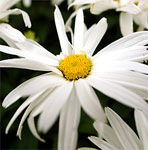
There’s a lot to be said for how the accessibility of affordable digital cameras has improved the level of photography overall, and I’m strongly in favour of the idea that digital photography is a good thing.
The downside of digital photography is that we are seeing a whole generation of people who never saw a frame of film as something precious. There are thousands upon thousands of photographers out there who only started thinking about photography when they weren’t limited to 24 or 36 frames before bringing the film to the local shop, and then wait for hours for the results.
Waiting for 2 days for a letter to arrive? Rubbish — Use e-mail! Looking up something in an encyclopedia? Bollocks to that — throw yourself at Google, and you’ll have an answer in seconds. You don’t even have to know the alphabet or be able to spell the word you’re looking for anymore.
The same thing is happening to photography, and it’s happening fast. In a way, it is sad. I remember when I started out taking photos. I was given a 24 exposure film, and it had to last me a month, because I couldn’t afford to buy, develop, and print more than a single roll of film per month. Digital cameras didn’t exist, computers weren’t powerful enough to do even the simplest image editing, and learning of your own mistakes was a terribly long-winded process.
Everything is different now, and it is difficult to say if it is better or worse. I’m guilty of it myself: Instead of planning carefully, measuring light properly, framing everything perfectly, I snap 20 photos to get the light right, 15 more to get the framing right, and a few test shots for good measure.
All in all, it took a painter with a photo camera to remind me what I am doing wrong with photography.
As part of my Photo Critique sessions, I received an e-mail from Kate Ferris, who lives in Scotland. She’s special in the fact that she doesn’t classify herself as a photographer. In fact, she’s an artist first and foremost, and uses photography almost as a tool to help her along. I don’t know if her workflow is meticulous and slow or quick, measured, and precise, but whatever she is doing, it’s showing in the her photographs.
As she says: “I take photos as paintings”, and I think it is a philosophy that is worth exploring further…
Photographic impressionism

Kate submitted 4 photos for critique, and for the first time in Photocritic history, I’m going to use them all in the critique. The first photo is by far the least good of the lot, but it is being let down on technical grounds rather than on the idea. Titled “Inside looking Out”, it is a photo of an urban scene photographed through a window. The neon yellow near the bottom of the photo looks as if it could be a police officer. The yellow reflections in the window make me think that perhaps the photograph was taken from a bus, and the absolutely ridiculous amount of grain evident in the photo tells me that she was really pushing her camera to the max. It’s probably the only way to capture this photo — especially if it was taken on a moving bus — but the neon, combined with the red light towards the right side of the photograph (a brake light? A stop light) and the more yellow light above it appeals to me.
The great thing about this photo is that it would be easy to re-create, and easy to get it right. The effect is created by streams upon streams of water cascading down the window, and the tasty bits of the image are due to the reflected light. So — grab some lanterns, and re-create the photo in your front garden. Different color lights in the lanterns. Camera on a tripod at a low ISO (100 would be great). Get the water hose out to get the window properly streaming with water. And start experimenting. This photograph is impressionism at its finest.
You can’t see anything of what is going on, and yet it is appealing on a level I can’t quite grasp myself. This photo is rubbish — but the idea behind it is fantastic, and all it needs is some more experimentation, a little more planning and a bit less grain.
Photographic realism
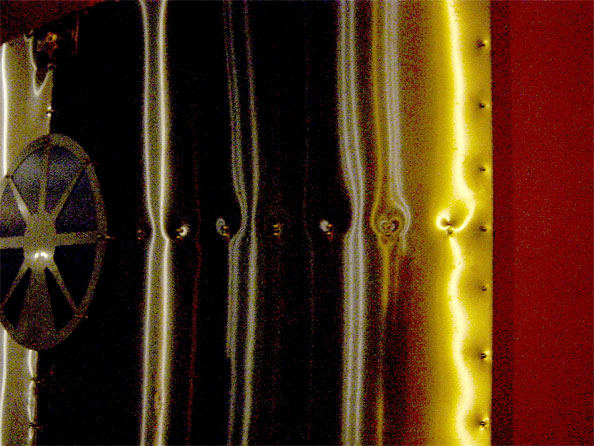
The next step on the arts ladder in our adventure in photography is realism. You know those paintings you see in museums where the scene looks as if it could be real, but then doesn’t quite work out? I recently went to Edward Hopper’s exhibition at the Tate in London, and found his works to be downright unsettling. With every photo, there would be something subtly wrong, which upset my photographer’s eye for a picture. Eventually, I worked it out: It’s the lighting. Shadows are missing. Shades are going the wrong way. The most important parts of the images don’t have any highlights on them.
The second photo in this critique invokes that very same feeling on me. I have no idea what I am looking at here — it looks like copper nailed to a wall, perhaps in an old museum or a theatre — but that is not important. The strong, but interrupted vertical lines, along with the unidentifiable object to the left, and the strongly contrasting colours on the right really appeal to me, somehow. It is quite obviously the case of spotting something which appealed to Kate, which she set out to capture. Again, the grain is rampant in this photo (and the particular way the grain manifests itself indicates that this photo is a victim of heavy increases in contrast in Photoshop), and the photograph would have been far better if it had been a more pure representation of the scene, but the idea behind the photo is great. Kate, if you can, go back to the same place, bring a tripod, and try again. I love how you’re thinking, it’s just the execution that’s letting you down.
Photographic Expressionism

Taking a leap of faith into yet another photographic period. The third of Kate’s photos is a bound into expressionism. Moving away from the documentary sphere and into the realm of emotions, the expressionists bend reality to illustrate a frame of mind. To me, this photograph, obviously taken on a beach somewhere, very strongly invokes the feeling of just that. The only frame of reference is a very small speck of sand that isn’t blurry. The rest of the image is a wild mixture of motion, turmoil, and very strong contrast.
Is it a technically perfect photo? Far from it — the foam on the wave is over-exposed, the darker areas of the foam have a very odd blue tinge to them, and I wish a little more of the sand had been stationary and in sharp focus. Having said that, this photo succeeds where many other entries to my photo critique completely fail: It’s illustrating an emotion and has a message. More than that, the photographer saw something that nobody else saw, and decided to try to express it in a way that would show it to casual observers: By capturing it as a photograph.
De Stijl

The last photo from Kate is a lot more conventional than the others, but is also the most technically accomplished. The sharpness is spot-on, the exposure is fine, and the colours have a subtle vibrancy in their own right. The-unhurried simplicity of the ropes hanging in the water is an image of deep, heart-felt tranquility.
I know I’m probably pushing the comparison a bit far, but if I were to compare this photograph to a photographic style, it would have to be De Stijl. The most famous Stijlist — Piet Mondrian — became famous for the forced simplicity in his art works as he introduced a strict minimalism and what he saw as a level of order and harmony beyond what common humans could achieve normally. This photograph is rather close to that ideal: Dark colours, prime colours, simplicity and tranquility united in a photograph that would have looked marvellous on my living room wall. Why? Because anybody could have taken it, but one person took the time to capture it for all to see.
Have you completely lost your mind?
Well, probably. The thing is, I’m a little surprised myself at how moved I am by these photographs. Normally, I’m the first to point out the technical flaws in a photo.
There’s a moral to this story, though, and that is that there is a name for people who take perfectly exposed, impeccably focused and faultlessly framed photos every single time: Technicians.
If I were a photography teacher, I’d take on a visionary student without the technical skills over a technically perfect photographer who lacks the imagination. Every time.
So, if you learn one thing from this critique, let it be this: Take a closer look at painters, illustrators, and other artists of times gone by — visit a gallery or two, and stop to think why their art works. Then take as much time as you need to re-create some of it as photography. Trust me, there’s greatness on that path.
Let’s all try it: The 5 shot challenge.
Finally, I have a challenge for you. Take out your digital camera, and go for a walk outside. On your entire walk, you are only allowed to take 5 photographs, and they have to be of 5 different scenes. If you screw up a photo for any reason, you have lost that scene, and are not allowed to try again.
Think of photography as painting. Be meticulous. Be precise. Spend a lot of time looking through the viewfinder. When you’re sure everything is perfect, pull the trigger.
If you try this, I’d love to see the results — post them in a Flickr gallery or on your blog or something, and post a link to it in the comments to this post.
Do you enjoy a smattering of random photography links? Well, squire, I welcome thee to join me on Twitter -
© Kamps Consulting Ltd. This article is licenced for use on Pixiq only. Please do not reproduce wholly or in part without a license. More info.












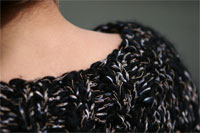


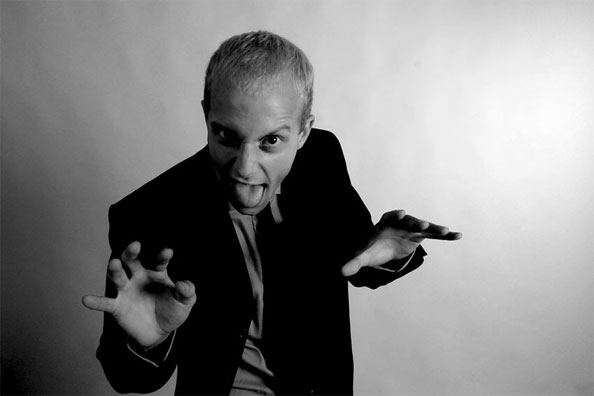
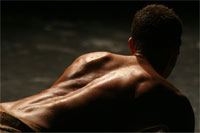 To me, a portrait doesn’t have to be a flat-on head-and-shoulders photo. Hell, I’ve seen excellent portraits that don’t even have faces in them. The point I’m trying to make is that there are too many people why are just straight-up trying too hard with their portraiture.
To me, a portrait doesn’t have to be a flat-on head-and-shoulders photo. Hell, I’ve seen excellent portraits that don’t even have faces in them. The point I’m trying to make is that there are too many people why are just straight-up trying too hard with their portraiture.
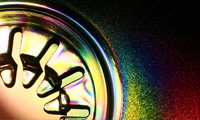
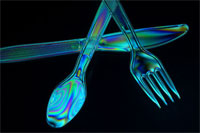 Imagine now, if you will, what would happen if you were to put another set of bars, rotated 90 degrees in relation to the first set of bars. In theory, none of the ice-cream sticks would get through, right? Well, that’s how Polarizer filters work, too. Of course, no polarizer filter is perfect, so some light will always get through, but the vast bulk of light is filtered out.
Imagine now, if you will, what would happen if you were to put another set of bars, rotated 90 degrees in relation to the first set of bars. In theory, none of the ice-cream sticks would get through, right? Well, that’s how Polarizer filters work, too. Of course, no polarizer filter is perfect, so some light will always get through, but the vast bulk of light is filtered out.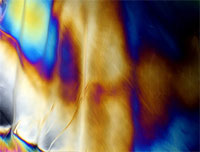 Cross-polarization exploits this by placing objects made of some types of plastic between the first and the second polarizer. For this particular set-up, you’ll want to put your first polarizer in front of the light source, then your plastic object, and then use the second polarizer in front of your lens.
Cross-polarization exploits this by placing objects made of some types of plastic between the first and the second polarizer. For this particular set-up, you’ll want to put your first polarizer in front of the light source, then your plastic object, and then use the second polarizer in front of your lens.
 Knowing that the flashgun uses the pre-flash for measuring light gives a hint: Just prevent it from doing light measurements! You can do this by using the flashgun in manual mode: Set the flash output yourself. To find out how much flash you need, either learn how to use your flash (there’s a rather excellent article about this on the
Knowing that the flashgun uses the pre-flash for measuring light gives a hint: Just prevent it from doing light measurements! You can do this by using the flashgun in manual mode: Set the flash output yourself. To find out how much flash you need, either learn how to use your flash (there’s a rather excellent article about this on the 

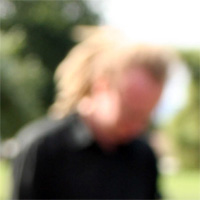 Shallow DOF and
Shallow DOF and 

 Right, I don’t have a lot of time to do a post today, but I just thought out something pretty cool – You all know what I look like, but I have no idea what you all look like. So how about a square portrait challenge?
Right, I don’t have a lot of time to do a post today, but I just thought out something pretty cool – You all know what I look like, but I have no idea what you all look like. So how about a square portrait challenge?








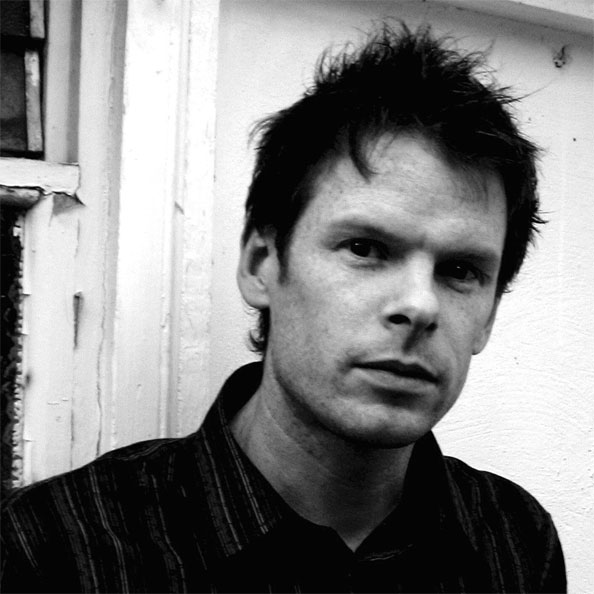
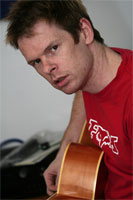 The first proper portrait I did was April this year. The friend in question was highly suspicious of my abilities, hugely hungover and rather lined and crumpled (he used to smoke 20 a day and had recently given up). I only had a compact digital camera with me at the time and the light was fading rapidly. I put it into sepia and made it look old fashioned because he’d insisted he didn’t want to look ginger on it, the awkward bastard. He was actually quite chuffed with his portrait and has merrily posted it on websites to show people. More importantly though, it stands as a record of how crumpled he actually was, and now, 9 months on, I’ve taken some more photos where he looks a lot less crumpled and he’s pretty pleased about this. This is what giving up smoking does for you.
The first proper portrait I did was April this year. The friend in question was highly suspicious of my abilities, hugely hungover and rather lined and crumpled (he used to smoke 20 a day and had recently given up). I only had a compact digital camera with me at the time and the light was fading rapidly. I put it into sepia and made it look old fashioned because he’d insisted he didn’t want to look ginger on it, the awkward bastard. He was actually quite chuffed with his portrait and has merrily posted it on websites to show people. More importantly though, it stands as a record of how crumpled he actually was, and now, 9 months on, I’ve taken some more photos where he looks a lot less crumpled and he’s pretty pleased about this. This is what giving up smoking does for you.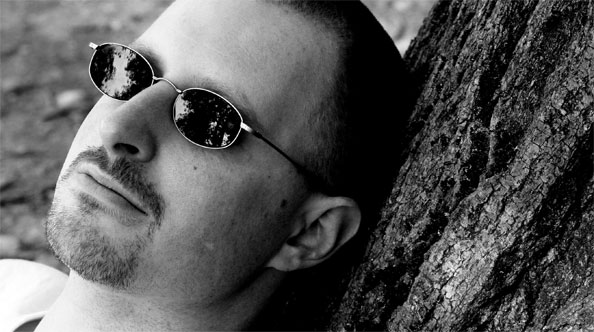
 There was a point to this post (I’ll get there in the end, honestly) and it was that as Christmas has just been and gone there are a lot of people out there who have been let loose with new cameras, or new lenses for old cameras. Basically, the world is not a safe place right now if you’re nervous about having your photo taken. However, for all those new camera owners, you might get a photo worth sticking on your wall if you try out these five things:
There was a point to this post (I’ll get there in the end, honestly) and it was that as Christmas has just been and gone there are a lot of people out there who have been let loose with new cameras, or new lenses for old cameras. Basically, the world is not a safe place right now if you’re nervous about having your photo taken. However, for all those new camera owners, you might get a photo worth sticking on your wall if you try out these five things:
